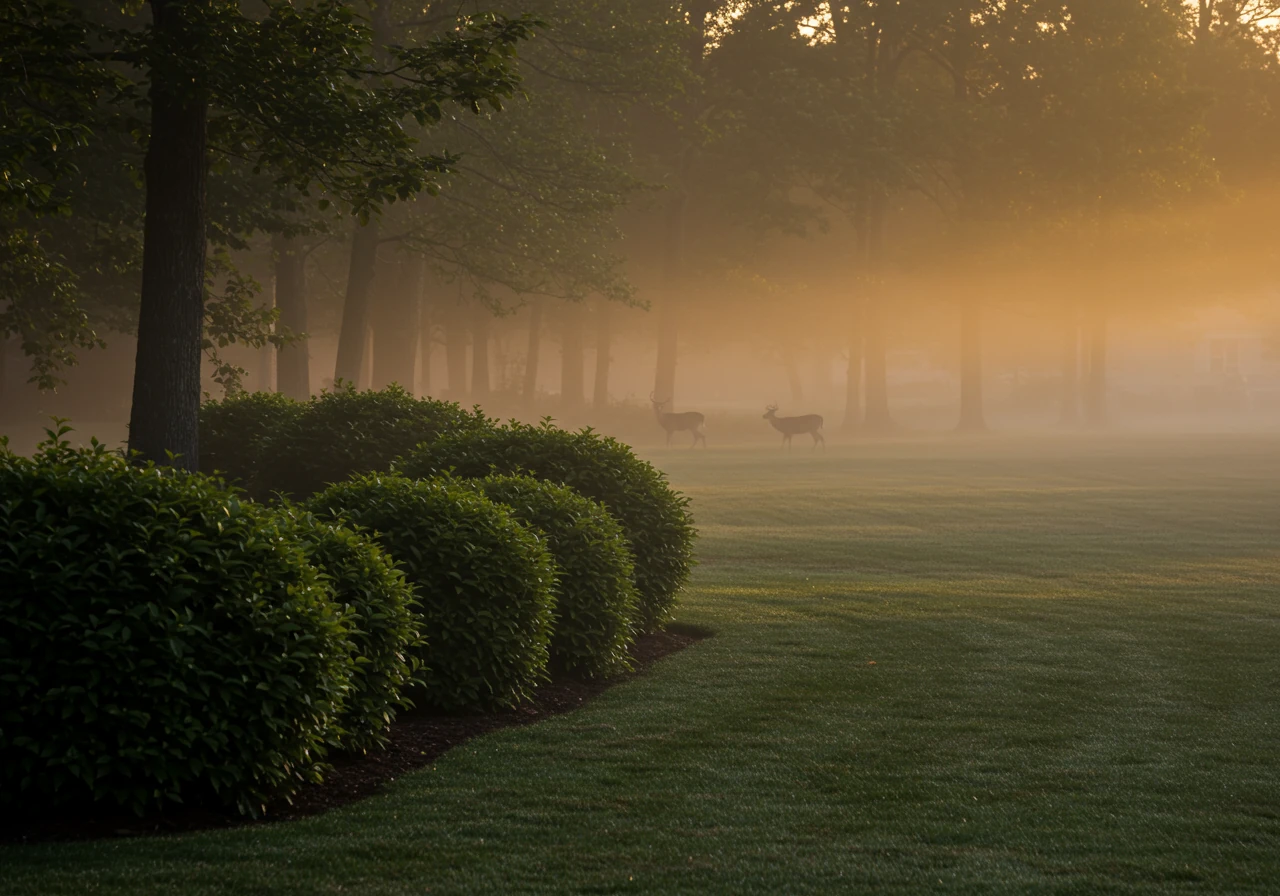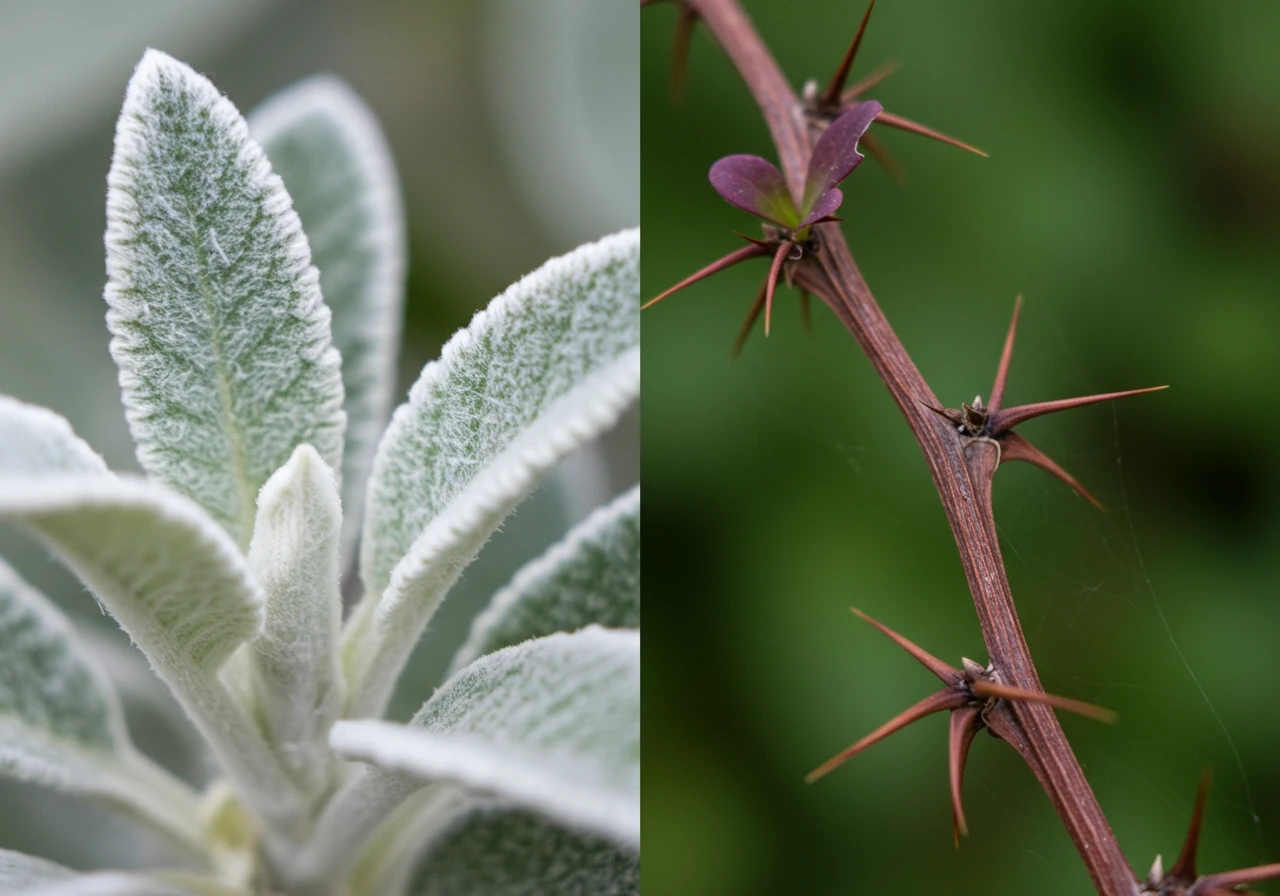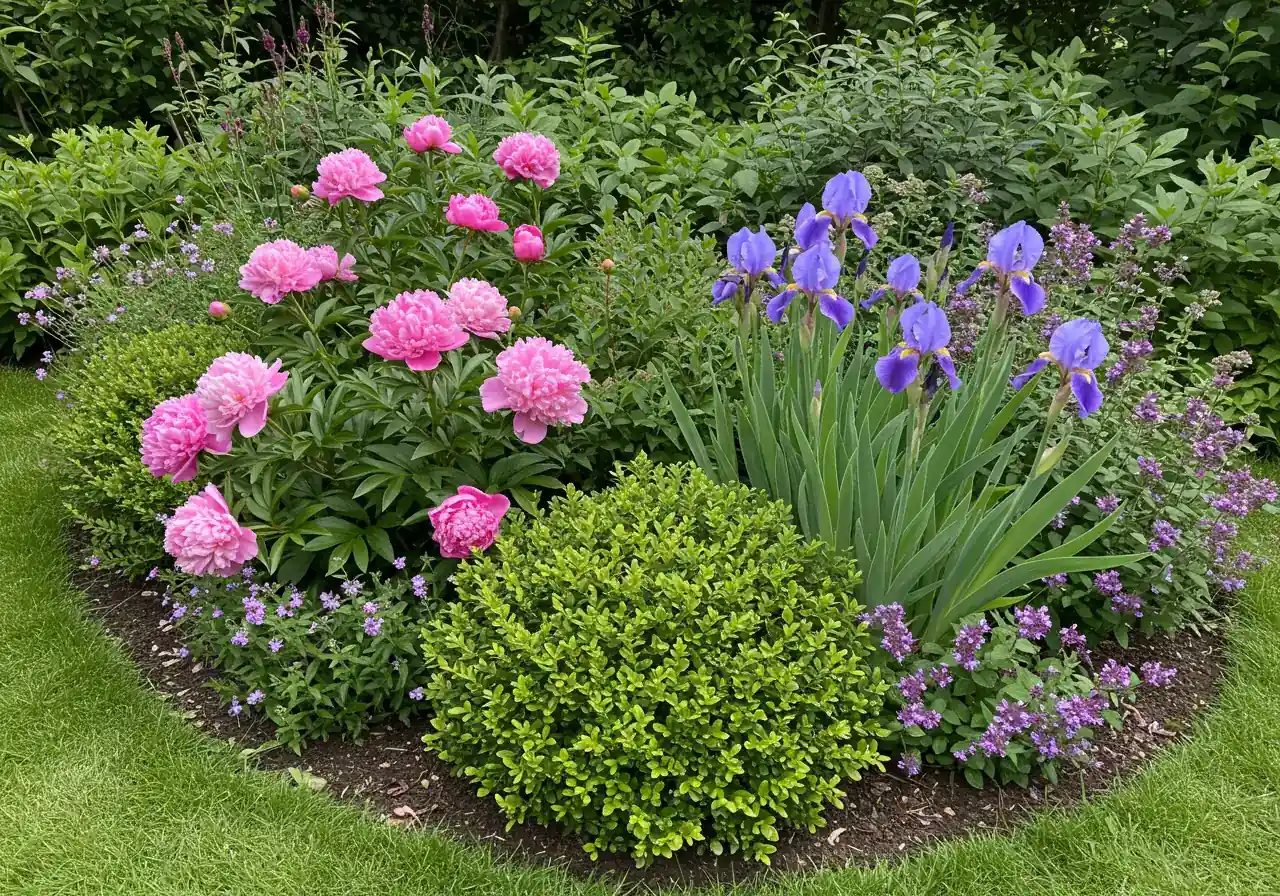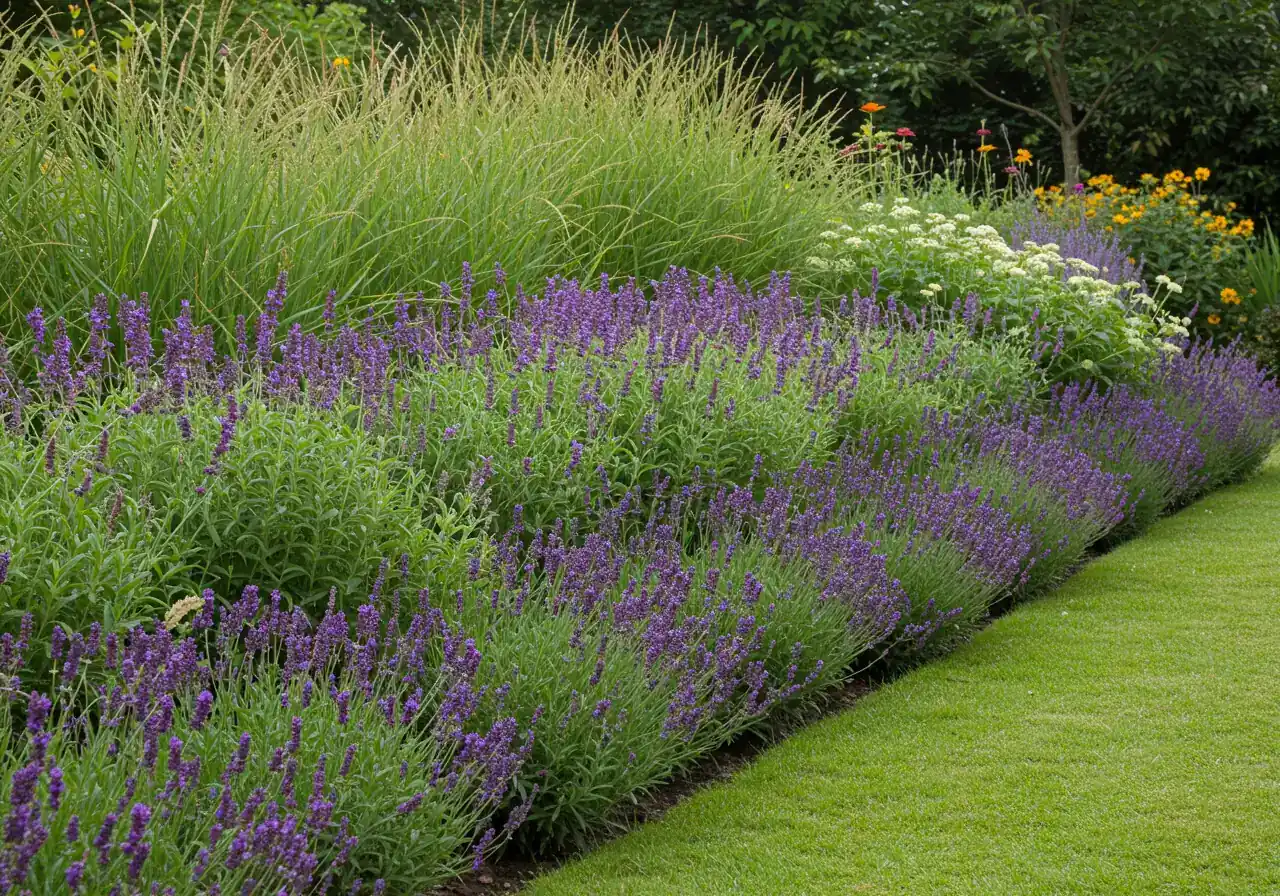Protect Your Greely Garden: Top Deer-Resistant Plants
Introduction: Oh Deer! Keeping Your Greely Garden Gorgeous
Hello, Greely gardeners! Isn't creating a beautiful outdoor space one of the great joys of living here? We love our spacious lots and the touch of nature right outside our doors, just south of Ottawa. But let's face it, sharing our neighbourhood with wildlife has its challenges. Specifically, those graceful but *hungry* deer! Finding your favourite flowers or shrubs turned into Bambi's midnight snack can be incredibly frustrating for any homeowner passionate about their landscaping.
Quick Guide to a Deer-Resistant Greely Garden:
- Understand local deer habits: They are most active at dawn/dusk and pressure increases in late winter/early spring.
- Choose plants deer dislike: Focus on texture (fuzzy, prickly, tough) and strong scents (herbs, some flowers).
- Use smart landscape design: Layer plantings and create resistant borders.
- Combine strategies: Use repellents or fencing if needed, especially in high-pressure areas.
- Maintain a healthy garden: Tidy spaces and vigorous plants are less attractive to deer.
Don't despair, though! You don't have to choose between a stunning garden and co-existing with our four-legged neighbours. The secret weapon? Choosing plants that deer generally find unappetizing. This guide is all about embracing *deer-resistant gardening*. We'll explore a variety of beautiful, hardy plants – from vibrant perennials to sturdy shrubs – that tend to get bypassed by browsing deer. Let's discover how you can maintain a gorgeous Greely garden that *you* get to enjoy, season after season.
The Four-Legged Foodies: Understanding Deer Habits in Ottawa's Rural South

Okay, let's talk about our resident "four-legged foodies" here in Ottawa's beautiful rural south. Why do deer seem to love neighbourhoods like Greely, Manotick, Kars, and the areas near the Rideau River *so* much? It's not just your prize-winning hostas (though those probably look tasty!). Our region offers the perfect deer real estate: plenty of green spaces, nearby farms, wooded areas for cover, and easy access to water. Think of it as prime deer living! For more info on local wildlife interactions check resources from the Rideau Valley Conservation Authority.
These graceful grazers are creatures of habit, and their routines change with the seasons. In spring and summer, while wild food is plentiful, the tender new shoots in your garden beds can be like an irresistible salad bar. It's crucial to protect spring planting during these vulnerable months. As autumn arrives, natural food sources start to disappear, and the mating season (rut) gets them moving around more, often closer to our homes. This makes your garden even more appealing. Preparing your yard, perhaps considering some strategic fall tree pruning, can sometimes help minimize attractive hiding spots or easy food access.
Winter is the toughest time for deer. Snow cover makes finding food difficult, forcing them to browse on whatever they can find – including evergreen shrubs and tree bark they might ignore other times of the year. Implementing effective winter garden protection strategies becomes really important then.
Understanding *when* they feed helps too. Deer are most active at dawn and dusk, using the low light for cover. You might also find that strategies for deer deter other garden munchers; you can explore ideas for rabbit-resistant plants and garden protection which sometimes overlap. Keeping your property tidy can also reduce attractive shelter spots – something like a thorough Vernon property cleanup service can make a difference. Knowing these habits helps us garden smarter, not harder, and if you need a hand, there are always professional landscaping services available to help protect your beautiful investment. Check out reviews on our Google My Business page to see how we've helped others!
Decoding 'Deer-Resistant': What Makes Bambi Turn Up His Nose?

So, you've seen the term "deer-resistant" on plant tags and probably wondered, "Does that *really* work?" Well, mostly yes, but it's not quite a magic shield. Think of deer like picky toddlers – some things they just won't eat unless they're *really* hungry. Understanding *why* they pass up certain plants helps us make smarter choices for our gardens in areas like Manotick or Barrhaven.
What makes Bambi turn up his nose? It often boils down to three things:
-
Texture: Deer generally prefer tender, smooth leaves. They tend to avoid plants with:
- Fuzzy or Hairy Leaves: Think Lamb's Ear. It’s like trying to eat a fuzzy sweater – not appealing.
- Prickly or Spiny Textures: Plants like Barberry have built-in defense mechanisms. Ouch!
- Tough, Leathery Leaves: Boxwood or Holly leaves aren't exactly easy chewing.
-
Smell: Deer have a very sensitive sense of smell, which they use to detect predators *and* find food. Plants with strong scents can be overwhelming or signal something unpleasant.
- Pungent Herbs: Lavender, Mint, Sage, and Rosemary often get left alone. Their strong aroma is a turn-off.
- Strong-Smelling Flowers: Marigolds and Peonies sometimes fall into this category.
-
Taste: Some plants contain compounds that taste bitter or are even mildly toxic (to deer, not necessarily us!).
- Bitter Flavours: Many ferns and ornamental grasses have tastes deer dislike.
- Toxic Compounds: Plants like Daffodils, Foxglove, and Monkshood are usually safe from nibbling because they can make deer feel sick.
Choosing Wisely & Plant Health
When planning your garden, focusing on plants known for these resistant traits is a great start. Healthy, vigorous plants grown in good soil (whether it's the clay or loam common around here) also tend to be less appealing than stressed ones. Proper lawn care and garden maintenance contribute to overall plant resilience. Making smart choices during your Material Selection process, focusing on texture and scent, can save you headaches later. If deer pressure is high, even resistant plants might need occasional protection. Sometimes, just keeping the area clear with a local Ottawa property cleanup service can make your yard less inviting.
Need help figuring out the best options for your specific yard? Don't hesitate to Contact Us for advice! We value your trust and handle your information carefully; you can review our data practices in our Privacy Policy. Let's work together to create a beautiful space deer are more likely to admire from afar!
Your Greely Garden All-Stars: Top Deer-Resistant Plant Picks
Okay, let's get down to the fun part – choosing plants that will make your Greely garden shine *without* becoming a deer buffet! Living in areas like ours, or neighbouring communities such as Richmond or Barrhaven, means we need plants that are tough, beautiful, and generally ignored by our hoofed neighbours. Remember, no plant is 100% deer-*proof*, especially if food is scarce, but these selections are known to be much less appealing than, say, your tempting tulips or hostas.

We've picked some reliable performers for our Ottawa climate (Hardiness Zone 5a) that deer usually give the side-eye.
Gorgeous Perennials Deer Tend to Pass By
Perennials are fantastic because they come back year after year, adding structure and colour to your garden beds. Here are a few deer-resistant stars:
- Peonies (*Paeonia lactiflora*): Who doesn't love big, beautiful Peony blooms? Luckily, deer often find their scent and perhaps their slightly bitter taste unappealing. They come in stunning colours, prefer full sun to light shade, and well-drained soil. Once established, they're pretty low-maintenance, though they might need staking when heavy with flowers. Definitely a classic choice for long-lasting beauty.
- Bleeding Hearts (*Dicentra spectabilis*): These charming, shade-loving plants with their heart-shaped flowers are usually safe from deer. They bloom in late spring and early summer, adding a touch of romance to shadier spots. They like moist, rich soil. The foliage tends to die back in mid-summer heat, so plan for neighbouring plants to fill the gap.
- Siberian Iris (*Iris sibirica*): With their graceful, upright foliage and delicate flowers in shades of blue, purple, and white, Siberian Irises add elegance to sunny or partly shaded spots. Their fibrous leaves aren't very tasty to deer. They tolerate various soil conditions, including damper areas, making them quite versatile.
- Catmint (*Nepeta*): Not just for cats! Varieties like 'Walker's Low' form lovely mounds of grey-green, fragrant foliage topped with spikes of lavender-blue flowers all summer long. Deer typically detest the minty, aromatic leaves. It's drought-tolerant once established and loves full sun. A fantastic, easy-care option.
- Lungwort (*Pulmonaria* species): Known for its fuzzy leaves (texture deterrent!) and pretty blue, pink, or white flowers in early spring. Prefers shade and moist conditions.
Sturdy Shrubs That Stand Their Ground
Shrubs provide backbone and year-round interest in your landscaping. Choosing deer-resistant ones is key for structure.
- Boxwood (*Buxus* species): A classic for formal hedges or foundation plantings. Boxwoods have small, leathery leaves with a distinct scent that deer usually avoid. They prefer well-drained soil and can take full sun to partial shade. They respond well to pruning, allowing you to shape them as needed. Proper Material Selection of hardy varieties is important for our winters.
- Spirea (*Spiraea* species): Many Spirea varieties, especially those with rougher or more aromatic foliage like 'Goldflame' or 'Magic Carpet', are often ignored by deer. They offer colourful foliage and clusters of pink or white flowers. Most prefer full sun and are adaptable to different soil types. They are generally fast-growing and require occasional pruning to maintain shape.
- Potentilla (*Potentilla fruticosa*): Also known as Shrubby Cinquefoil, this is a super hardy, long-blooming shrub. Its fine-textured foliage and small, cheerful flowers (yellow, white, pink, orange) aren't favourites on the deer menu. It thrives in full sun and well-drained soil and tolerates dry conditions once established. Great for adding continuous colour.
- Russian Sage (*Perovskia atriplicifolia*): With its silvery, aromatic foliage and airy sprays of lavender-blue flowers from mid-summer to fall, Russian Sage is a showstopper. Deer strongly dislike its pungent scent. It demands full sun and excellent drainage – it hates wet feet! It adds wonderful texture and height.
Other Reliable Resistant Choices
Don't forget about bulbs and grasses!
- Daffodil (*Narcissus* species): A true hero of deer resistance. Daffodils contain lycorine, an alkaloid that is toxic to deer and rodents. Plant them generously for reliable spring colour! They need full sun to part shade and well-drained soil.
- Feather Reed Grass (*Calamagrostis x acutiflora* 'Karl Foerster'): This popular ornamental grass provides wonderful vertical structure and texture. Its tough blades are generally ignored by deer. It thrives in full sun and offers year-round interest.
- Most Ferns: Many common garden ferns, like Ostrich Fern or Lady Fern, have textures or tastes that deer tend to avoid. They are excellent choices for shady, moist areas.
- Strongly Scented Herbs: As mentioned, Lavender, Rosemary, Sage, Thyme, and Mint (plant mint in containers!) are excellent deterrents due to their potent aromas.
Quick Reference: Greely Garden All-Stars
Here's a handy table summarizing some top picks:
| Plant Type | Common Name | Botanical Name | Sun Needs | Resistance | Notes |
|---|---|---|---|---|---|
| Perennial | Peony | Paeonia lactiflora | Full Sun/Part Shade | High | Large blooms, classic, low maintenance |
| Perennial | Bleeding Heart | Dicentra spectabilis | Part/Full Shade | High | Unique heart flowers, prefers moist soil |
| Perennial | Siberian Iris | Iris sibirica | Full Sun/Part Shade | High | Elegant flowers, tolerates damp soil |
| Perennial | Catmint | Nepeta species | Full Sun | High | Long bloom, aromatic, drought tolerant |
| Perennial | Lungwort | Pulmonaria species | Part/Full Shade | High | Fuzzy leaves, early spring blooms |
| Shrub | Boxwood | Buxus species | Full Sun/Part Shade | High | Evergreen, formal, good for hedging |
| Shrub | Spirea (some) | Spiraea species | Full Sun | Moderate | Colourful foliage/flowers, adaptable |
| Shrub | Potentilla | Potentilla fruticosa | Full Sun | High | Very hardy, long bloom season, low care |
| Shrub | Russian Sage | Perovskia atriplicifolia | Full Sun | High | Aromatic, airy texture, needs good drainage |
| Bulb | Daffodil | Narcissus species | Full Sun/Part Shade | Very High | Toxic to deer, reliable spring colour |
| Grass | Feather Reed Grass | Calamagrostis x acutiflora | Full Sun | High | Upright form, early plumes, texture |
Planting and Care Tips
Before you plant your new deer-resistant warriors, make sure the garden bed is well-prepared. Sometimes starting with a thorough Ottawa property cleanup service gives you a clean slate. Even resistant plants benefit from good soil, proper watering (especially when establishing), and adequate sunlight according to their needs. Remember that stressed plants can sometimes become more attractive targets. Consistent garden maintenance helps keep plants healthy and vigorous. If you're dealing with significant leaf litter or debris build-up, especially in nearby areas, using a service like a neighbourhood Metcalfe garden clean up service can reduce hiding spots and make your yard less appealing overall.
While these plants are generally reliable, monitoring is still wise, especially when plants are young or during tough seasons. Sometimes combining resistant plants with other deterrents (like repellents or fencing, if necessary) offers the best protection. Keeping the area tidy with a professional Ottawa property cleanup service can also subtly discourage deer from lingering.
Choosing the right plants is a huge step towards a beautiful, stress-free Greely garden. Need a hand with planting or ongoing care? A reliable Ottawa garden maintenance service can help ensure your deer-resistant all-stars thrive! Happy gardening!
Beyond the Plants: Smart Strategies for a Deer-Deterring Landscape

Alright, so we've loaded you up with great plant suggestions that deer often snub. But choosing the right greenery is only part of the puzzle! How you *arrange* your landscape can make a huge difference in convincing Bambi and his buddies to dine elsewhere. Let's dive into some clever design tricks for your Ottawa garden.
Layer Up and Create Borders
Think like a deer for a second (a slightly nervous deer). Would you rather stroll across an open buffet or sneak through dense, unfamiliar obstacles? Deer often prefer clear paths. You can discourage them by using *layering*:
- Plant taller, tougher shrubs or grasses at the back of your garden beds (closer to where deer might approach from).
- Place medium-height perennials and less-tasty options in the middle.
- Put your most precious (or slightly more tempting) plants towards the front, closer to your house or patio, where deer are less likely to venture.
Creating dedicated *borders* using deer-resistant plants is another fantastic strategy. A thick edge of smelly herbs, prickly shrubs, or fuzzy-leaved plants acts like a natural fence, protecting the goodies inside. It’s like putting the vegetables around the edge of the dessert table – makes it harder to get to the cake! You can see how strategically placed plantings contribute to stunning garden transformations that are both beautiful and functional.
Super Simple 5-Step Resistant Border Guide:
- Scout it Out: Figure out where deer usually enter your yard. These are your key defense points.
- Prep the Zone: Clear the area for your border planting. A thorough cleanup, maybe like the work done by a neighbourhood Metcalfe yard cleanup service if it's a large space, gives you a fresh start. Crucially, ensure proper soil preparation – healthy, vigorous plants are naturally less appealing to pests, including deer.
- Pick Your Guards: Choose sturdy, deer-resistant plants for this outer edge. Think pungent herbs (Lavender, Sage), tough grasses, or shrubs deer dislike (like Boxwood or Potentilla). Maybe consider options from a local source like the RVCA Native Plant Database.
- Plant Densely: Don't leave gaps! A thick, full border is much more deterring than a few lonely plants. Consider professional garden installation if needed.
- Keep it Strong: Maintain the border by watering appropriately, weeding, and replacing any plants that don't make it. Regular garden maintenance is key.
Clever Companion Planting & Native Choices
Mix things up! Planting strongly scented herbs like chives, mint (in containers, it spreads!), or rosemary among more vulnerable plants can confuse a deer's sensitive nose. They might smell the rosemary and decide the whole area isn't worth investigating.
For an eco-friendly approach, especially in areas like Winchester or Embrun, consider native plants. Many native species, like Wild Bergamot (*Monarda fistulosa*) or Little Bluestem grass (*Schizachyrium scoparium*), are naturally less palatable to local deer because they evolved alongside them. Plus, they support local pollinators!
Fences and Repellents: The Backup Plan
Sometimes, especially in areas with heavy deer pressure, you need extra help.
- Fencing: An 8-foot-tall fence is generally considered deer-proof, but check local Ottawa bylaws first. Shorter fences or angled designs can sometimes work. It's effective, but can be costly and changes your landscape's look. If you're hiring professionals for installation, be sure to understand their service agreement or Terms and Conditions. Providing clear estimate feedback can also help align expectations.
- Repellents: Sprays that smell or taste bad to deer can work, but need frequent reapplication, especially after rain or snow. Always choose options safe for pets, kids, and the environment. Rotate different types, as deer can get used to one scent.
Seasonal Deer Pressure & Tasks (Ottawa)
Deer behaviour changes through the year, affecting your garden strategy:
Spring (April-June)
High Pressure. Tender new shoots are irresistible! Protect vulnerable plants, start repellents, plant resistant borders. Consider a spring garden clean up.
Summer (July-August)
Moderate Pressure. Wild food is plentiful, but deer browse during dry spells. Maintain repellents, water deeply. Ensure good lawn care.
Fall (September-November)
Increasing Pressure. Natural food sources dwindle, rutting season increases movement. Protect evergreens, clean up fallen fruit (try a yard cleanup service), consider wrapping shrubs.
Winter (December-March)
High Pressure (esp. late winter). Food is scarce; deer browse almost anything. Check fences, reapply repellents, protect tree bark. Consider winter protection measures.
By layering plants, creating borders, using companion planting, and understanding seasonal pressure, you can build a landscape that’s much less tempting to deer. It’s all about making your garden beautiful for *you*, not just a snack bar for wildlife! We hope these tips help, and we always appreciate hearing from you – a quick Thank You or feedback helps us know what homeowners find useful. Happy landscaping!
Key Insights: Your Quick Deer Defense Cheat Sheet
Okay, gardening friends, feeling a bit overwhelmed by all the deer talk? No worries! Here's your quick cheat sheet to keep those lovely landscaping efforts from becoming a deer's dinner, especially useful for us folks gardening in Ottawa and surrounding areas like Manotick.
Key Insights: Your Quick Deer Defense Cheat Sheet
Think of this as the highlight reel for keeping your garden gorgeous and Bambi at bay:
- Nothing's Totally Deer-Proof: Remember, *resistant* doesn't mean *invisible*, especially when deer are extra hungry (like in late winter). But choosing less-tasty plants drastically improves your odds!
- Focus on Texture & Scent: Deer usually avoid plants with fuzzy, prickly, or tough leaves (think Lamb's Ear, Boxwood). Strong smells from herbs like Lavender or Sage are also major turn-offs. Like the experts you can learn about About Us, we recommend focusing on these characteristics.
- Smart Planting is Key: Don't just plonk plants anywhere! Layer your plantings, putting less tasty options on the outside borders. Strategic design, often seen in stunning garden transformations, guides deer away from the goodies.
- Tidiness Matters: A clean garden is less tempting. Regular upkeep, maybe even a professional Ottawa garden clean up service, removes hiding spots and fallen fruit snacks. Healthy plants, boosted by good care like proper mulching and edging, are also less susceptible.
- Reinforce When Needed: Sometimes, you need backup! Repellents (reapply often!) or fencing can be necessary in high-pressure zones. A general cleanup via an Ottawa property cleanup service can also make your whole yard less welcoming before resorting to major barriers.
Keep these points in mind, and you'll be well on your way to enjoying *your* garden, not sharing it with the entire local deer population!
Relative Deer Resistance (Higher is Better)
*Note: Resistance levels are approximate and can vary based on conditions.
Greely Garden Q&A: Your Deer-Related Questions Answered
Oh, if only it were that simple! Think of "deer-resistant" as "deer usually avoid" or "deer find yucky." Most of the time, deer will pass these plants by for tastier options. However, if food is very scarce (especially during a tough Ottawa winter) or if a curious young deer is doing some taste-testing, they might nibble on almost anything. So, while resistant plants greatly improve your odds, there's no absolute guarantee against a desperate deer.
Deer pressure changes with the seasons here in Ottawa South. The *highest* risk times are often late winter (February/March) when natural food is buried under snow, and early spring (April/May) when tender, juicy new growth emerges in your garden – it's like a spring salad bar for them! They can browse any time, but be extra watchful during these periods. Keeping your yard tidy, perhaps with a professional property clean up, can make it less inviting year-round.
While we avoid saying "100% proof" (because desperate deer!), some plants come incredibly close because they are toxic to deer. Daffodils and Foxglove are classic examples. Deer seem to instinctively know these will make them sick and leave them alone almost universally. But for most plants, even highly resistant ones, think 95-99% effective, not truly proof against every scenario.
Yes, they *can* work, but with some "ifs." Repellents use smells or tastes deer dislike. The catch? You need to reapply them regularly, especially after rain or heavy dew, for them to remain effective. It also helps to switch between different types of repellents occasionally, so the deer don't get used to one scent. They're a helpful tool in your deer-defense toolkit, but not usually a one-spray-and-forget solution. Sometimes a big cleanup, like a specific Metcalfe property cleanup service might offer, reduces the areas you need to spray.
Good question! You can try motion-activated sprinklers – a sudden spray of water surprises them effectively (and waters your lawn!). Some gardeners use shiny tape, pie plates, or even human hair scattered around, though success varies. Specific commercial repellents are another option. Keeping areas clear, like after a thorough Marionville yard cleanup service, can also reduce hiding spots near prized plants. Even installing a new lawn section via expert sod installation services might need temporary protection until established.
You're in luck! The Ottawa area, including Greely, Manotick, and Metcalfe, has several excellent local nurseries and garden centres. Look for knowledgeable staff who understand our local conditions and deer challenges. They can point you towards specific varieties of perennials, shrubs, and grasses known to be less appealing to deer. While we don't endorse specific businesses, exploring the garden centres in Ottawa South is your best bet for finding healthy, suitable plants. A tidy space often starts before planting; consider a helpful Marionville property cleanup service if you're prepping a large area. You can often find great advice at resources like the Ottawa Horticultural Society or the Master Gardeners of Ottawa-Carleton.
Conclusion: Reclaim Your Garden Oasis in Greely
So there you have it, Greely garden enthusiasts! Sharing our lovely Ottawa South space with deer doesn't mean sacrificing your beautiful landscaping dreams. As we've seen, the secret isn't building a fortress, but gardening smarter. By choosing plants with textures and scents deer find less appealing (think fuzzy, prickly, or pungent!), and using clever landscaping strategies like layering borders, you really can create a stunning garden oasis that Bambi and friends will *mostly* admire from afar. Remember those all-star perennials and shrubs – they’re your front line! Check out our transformations gallery for inspiration!
We know gardening in areas like Greely, Russell, or even Winchester comes with unique challenges, but a gorgeous, deer-resistant yard is absolutely achievable. Don't be discouraged! We wholeheartedly encourage you to *put this advice into action*. Start small, swap out a few deer favourites for resistant options, or try adding a border of fragrant herbs.
Feeling inspired but maybe a bit overwhelmed with the planning or planting? That's where we can help! If you'd like professional assistance designing a deer-smart landscape or need help getting those perfect plants expertly installed, *reach out to our team*. Let's work together to make sure *you* are the primary admirer of your beautiful Greely garden this season!
Happy gardening!

